 The Siege of Leningrad was a brutal and devastating military campaign that lasted for 872 days, from September 8, 1941, to January 27, 1944, during World War II.
The Siege of Leningrad was a brutal and devastating military campaign that lasted for 872 days, from September 8, 1941, to January 27, 1944, during World War II.
Leningrad, now known as Saint Petersburg, was then the second-largest city in the Soviet Union and a crucial industrial and cultural center. The siege was a critical moment in the war, and the outcome of the battle would have a significant impact on the outcome of the war.
The Siege of Leningrad was a part of Operation Barbarossa, the Nazi Germany invasion of the Soviet Union. The invasion was launched on June 22, 1941, and quickly advanced deep into Soviet territory. By early September, German troops had reached the outskirts of Leningrad, and the siege began.
The Soviet defense of Leningrad was initially weak, as the city’s garrison had been weakened by the Red Army’s defeats in the initial stages of the war.
However, the city’s residents and workers quickly mobilized to defend their city, and the Soviet government launched a massive evacuation effort to move civilians and critical industries out of the city.
 The siege began with a heavy bombardment by German artillery and airstrikes. The city’s defenses were weak, and the Germans quickly established a blockade around the city, cutting off all land and water routes.
The siege began with a heavy bombardment by German artillery and airstrikes. The city’s defenses were weak, and the Germans quickly established a blockade around the city, cutting off all land and water routes.
The only way in or out of the city was through a narrow corridor across Lake Ladoga, known as the Road of Life.
The German blockade cut off Leningrad from food and supplies, leading to severe shortages of food, water, and fuel. The Soviet government established a rationing system, but it was not enough to prevent starvation.
The situation was particularly dire during the winter months, as the city’s residents faced extreme cold, hunger, and disease.
Despite the difficult conditions, the residents of Leningrad continued to resist. They organized a makeshift defense force, made up of factory workers, students, and volunteers, who fought the Germans street by street.
The defense force was supported by the Red Army, which launched several counteroffensives to try and break the blockade.
The Road of Life was a critical lifeline for the city, and it was constantly under attack by German planes and artillery. Despite the danger, convoys of trucks and boats continued to make the perilous journey across the lake, bringing food, fuel, and medical supplies to the city.
 The 872 days of the siege caused extreme famine in the Leningrad region through disruption of utilities, water, energy and food supplies.
The 872 days of the siege caused extreme famine in the Leningrad region through disruption of utilities, water, energy and food supplies.
This resulted in the deaths of up to 1,500,000 soldiers and civilians and the evacuation of 1,400,000 more (mainly women and children), many of whom died during evacuation due to starvation and bombardment.
Piskaryovskoye Memorial Cemetery in Leningrad holds half a million civilian victims of the siege alone. Economic destruction and human losses in Leningrad on both sides exceeded those of the Battle of Stalingrad, the Battle of Moscow, or the bombing of Tokyo.
The siege of Leningrad ranks as the most lethal siege in world history, and some historians speak of the siege operations in terms of genocide, as a “racially motivated starvation policy” that became an integral part of the unprecedented German war of extermination against populations of the Soviet Union generally.
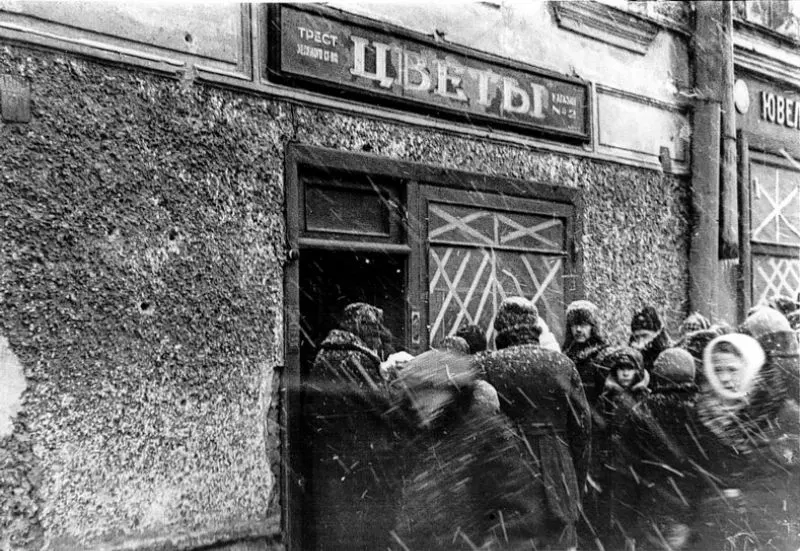 Civilians in the city suffered from extreme starvation, especially in the winter of 1941–42. From November 1941 to February 1942 the only food available to the citizen was 125 grams of bread per day, of which 50–60% consisted of sawdust and other inedible admixtures.
Civilians in the city suffered from extreme starvation, especially in the winter of 1941–42. From November 1941 to February 1942 the only food available to the citizen was 125 grams of bread per day, of which 50–60% consisted of sawdust and other inedible admixtures.
In conditions of extreme temperatures (down to −30 °C), and with city transport out of service, even a distance of a few kilometers to a food distribution kiosk created an insurmountable obstacle for many citizens.
Deaths peaked in January–February 1942 at 100,000 per month, mostly from starvation. People often died on the streets, and citizens soon became accustomed to the sight of death.
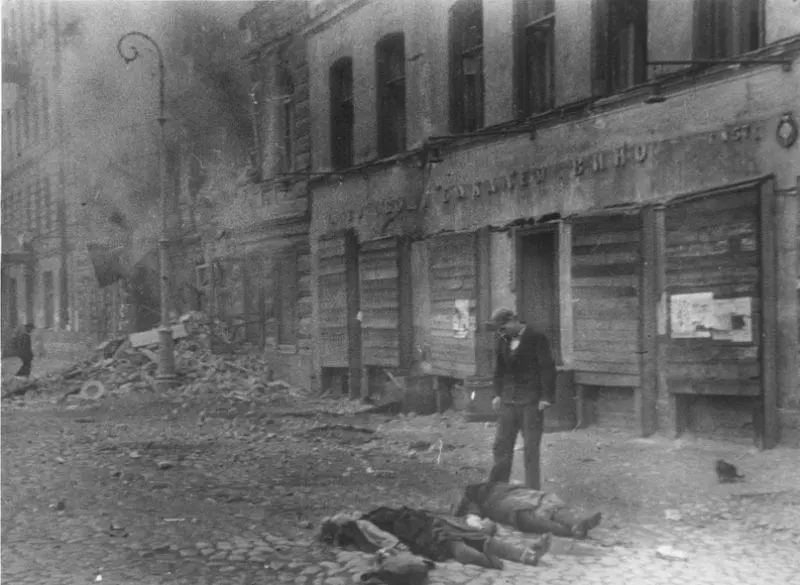 While reports of cannibalism appeared in the winter of 1941–42, NKVD records on the subject were not published until 2004. Most evidence for cannibalism that surfaced before this time was anecdotal.
While reports of cannibalism appeared in the winter of 1941–42, NKVD records on the subject were not published until 2004. Most evidence for cannibalism that surfaced before this time was anecdotal.
Anna Reid points out that “for most people at the time, cannibalism was a matter of second-hand horror stories rather than direct personal experience”.
NKVD files report the first use of human meat as food on 13 December 1941. The report outlines thirteen cases, which range from a mother smothering her eighteen-month-old to feed her three older children to a plumber killing his wife to feed his sons and nieces.
By December 1942 the NKVD had arrested 2,105 cannibals – dividing them into two legal categories: corpse-eating (trupoyedstvo) and person-eating (lyudoyedstvo). The latter were usually shot while the former were sent to prison.
Given the scope of mass starvation, cannibalism was relatively rare. Far more common was murder for ration cards.
In the first six months of 1942, Leningrad witnessed 1,216 such murders. At the same time, Leningrad was experiencing its highest mortality rate, as high as 100,000 people per month.
 The siege continued until 27 January 1944, when the Soviet Leningrad–Novgorod Offensive expelled German forces from the southern outskirts of the city.
The siege continued until 27 January 1944, when the Soviet Leningrad–Novgorod Offensive expelled German forces from the southern outskirts of the city.
This was a combined effort by the Leningrad and Volkhov Fronts, along with the 1st and 2nd Baltic Fronts. The Baltic Fleet provided 30% of aviation power for the final strike against the Wehrmacht.
In the summer of 1944, the Finnish Defence Forces were pushed back to the other side of the Bay of Vyborg and the Vuoksi River.
Historian Michael Walzer summarized that “The Siege of Leningrad killed more civilians than bombing of Hamburg, Dresden, Hiroshima and Nagasaki combined.”
The US Military Academy evaluated that Russian casualties during the siege were bigger than combined American and British casualties during the entire war.
Some 21st century historians, including Timo Vihavainen and Nikita Lomagin, have classified the siege of Leningrad as genocide due to the systematic starvation and intentional destruction of the city’s civilian population.
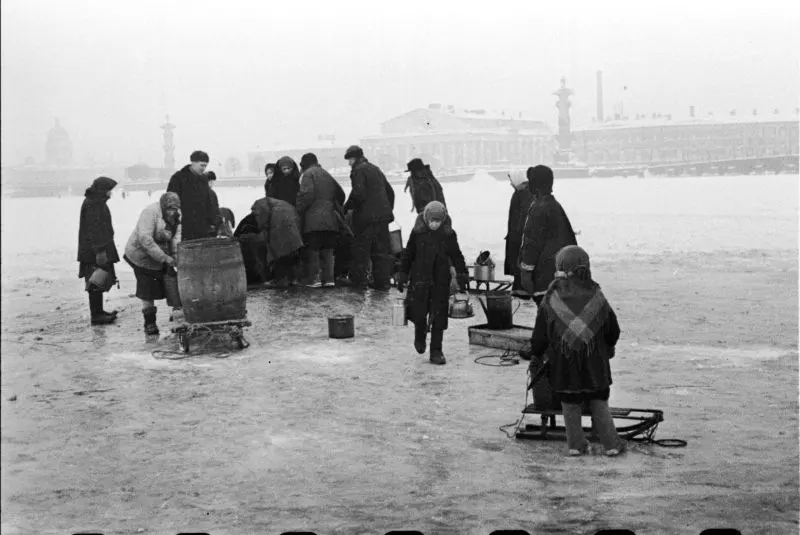
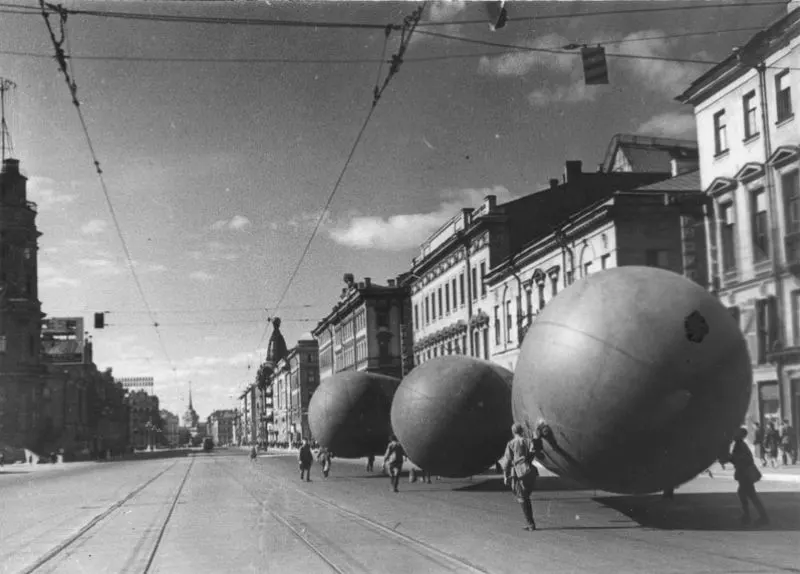
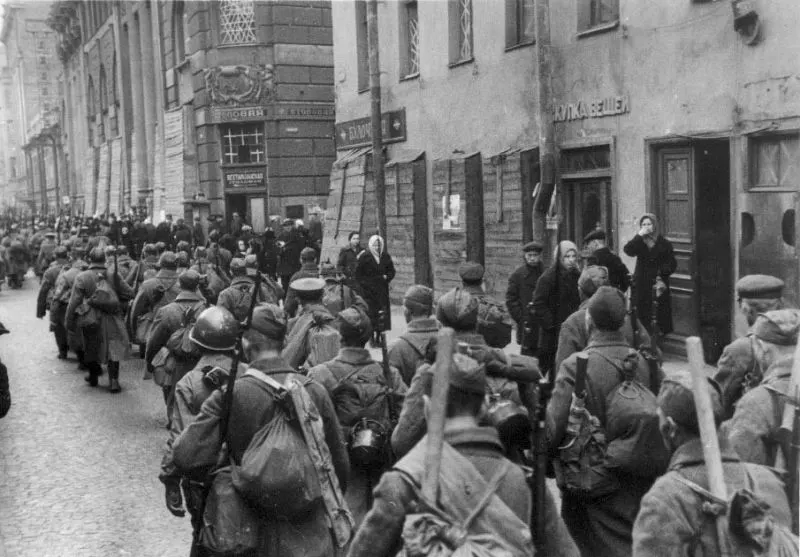
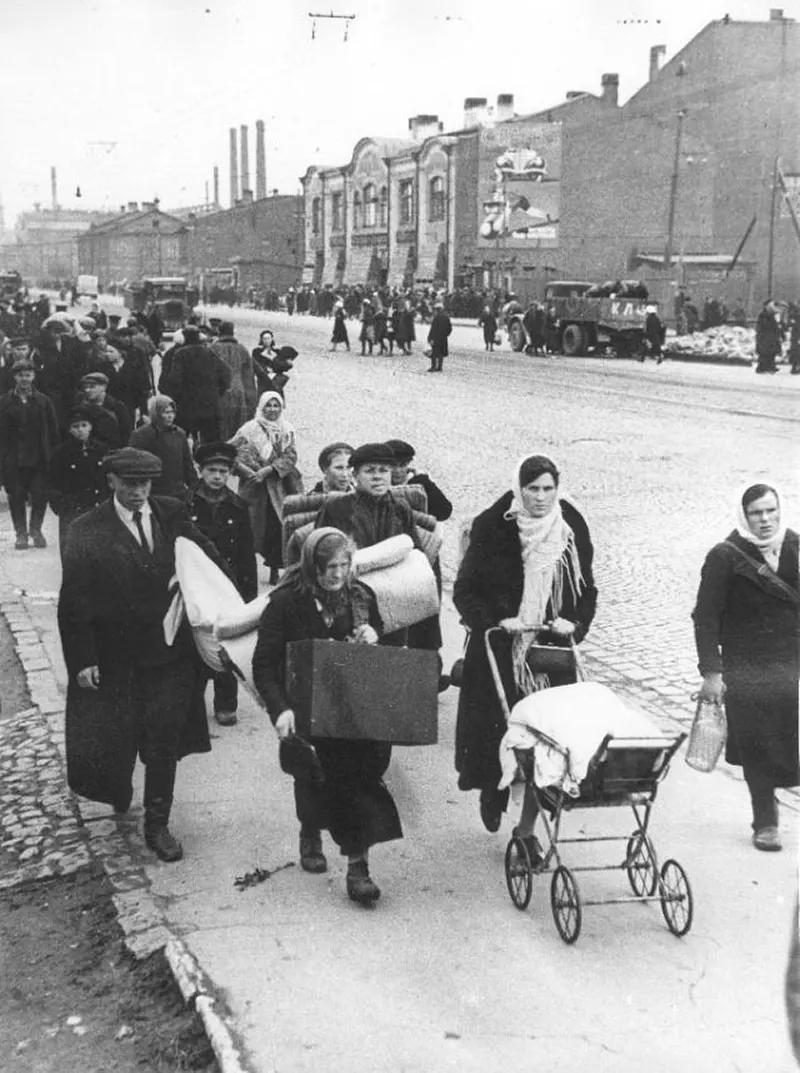



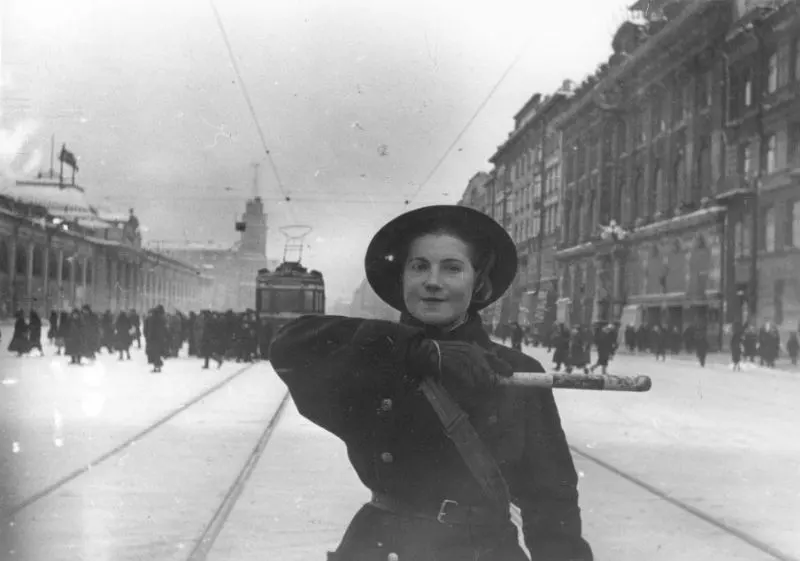
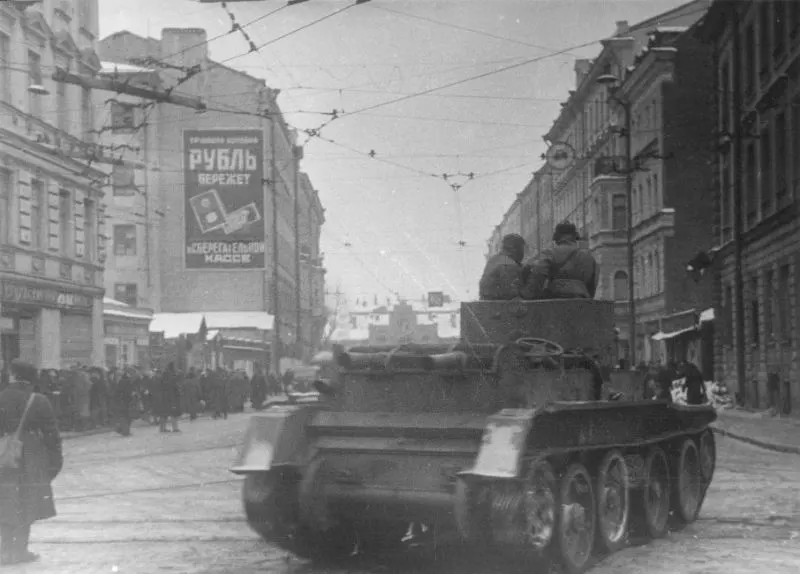

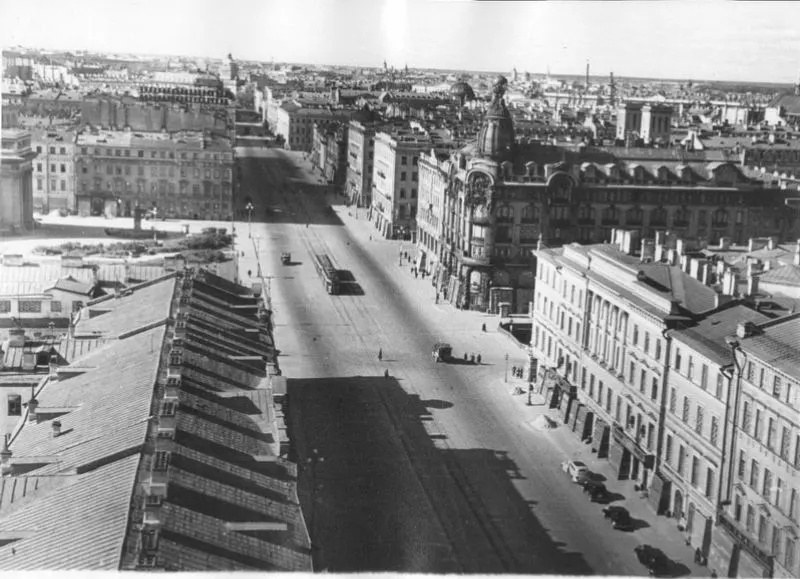
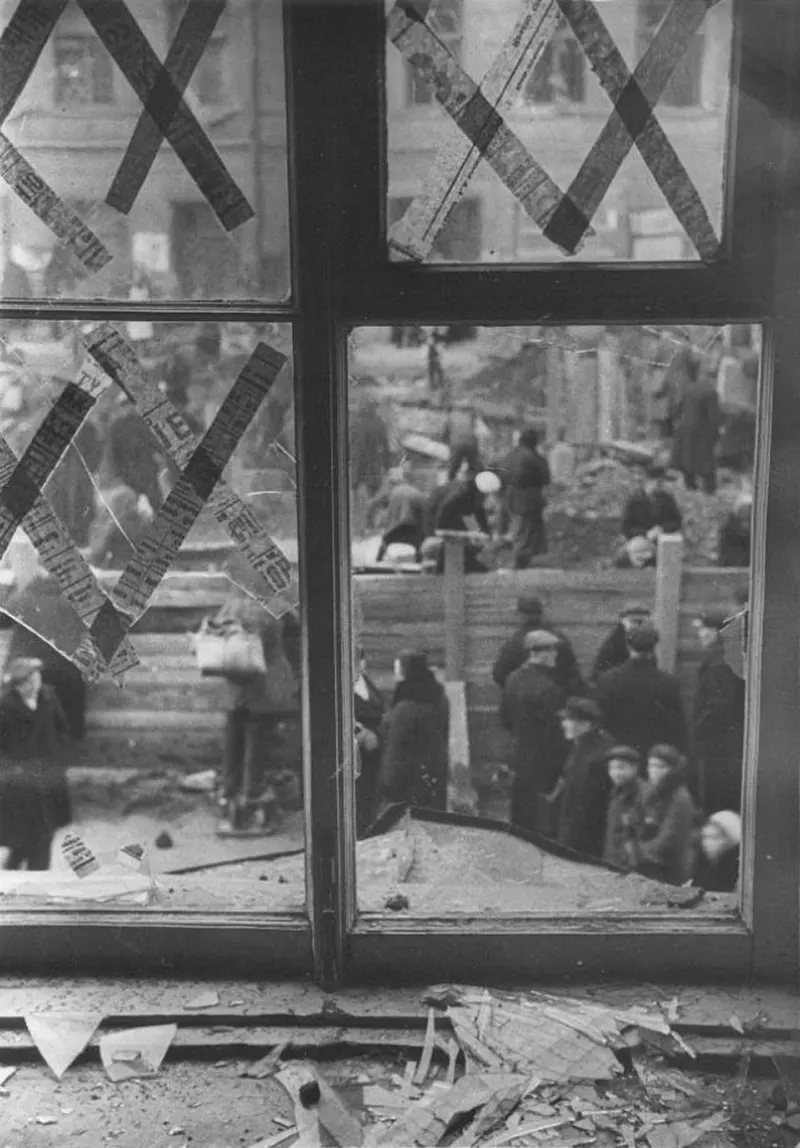
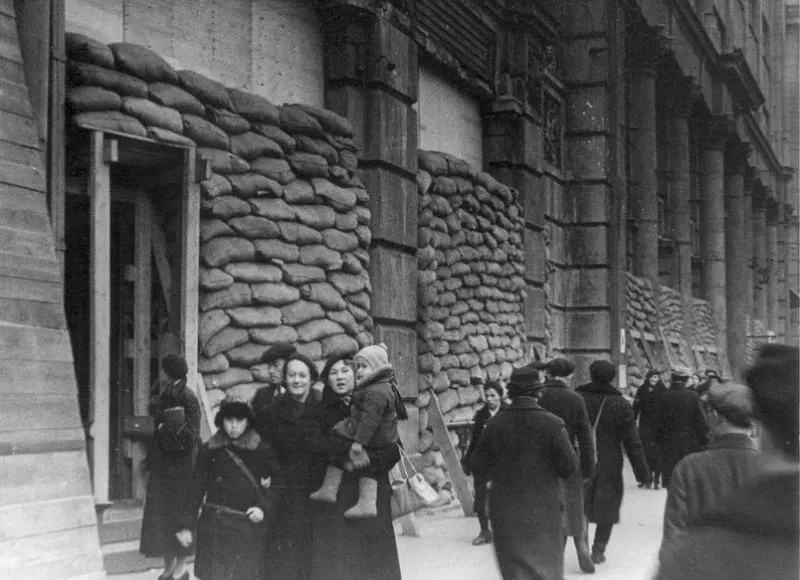


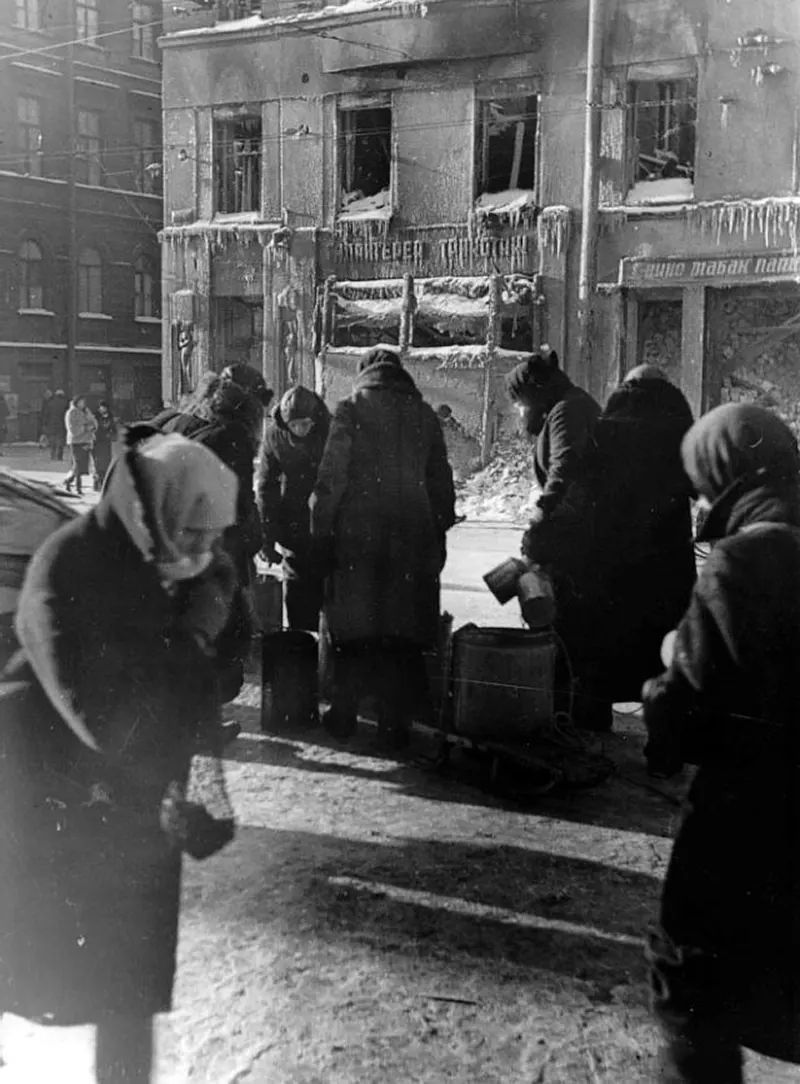

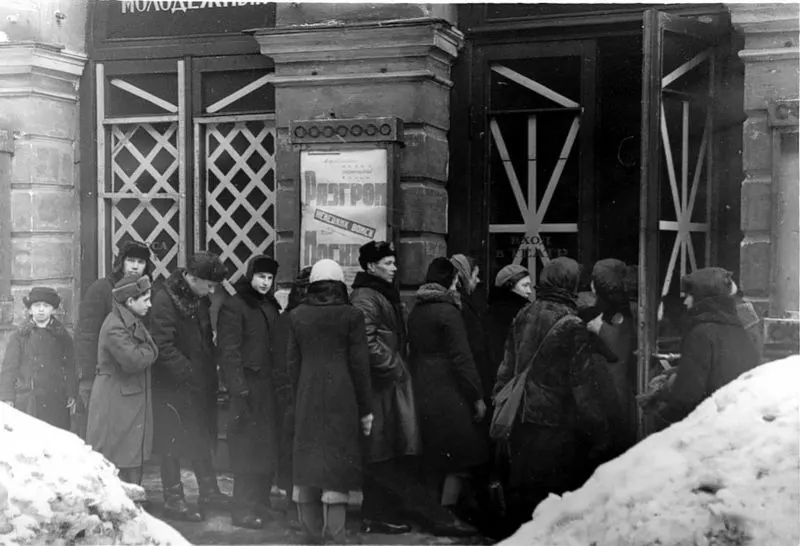
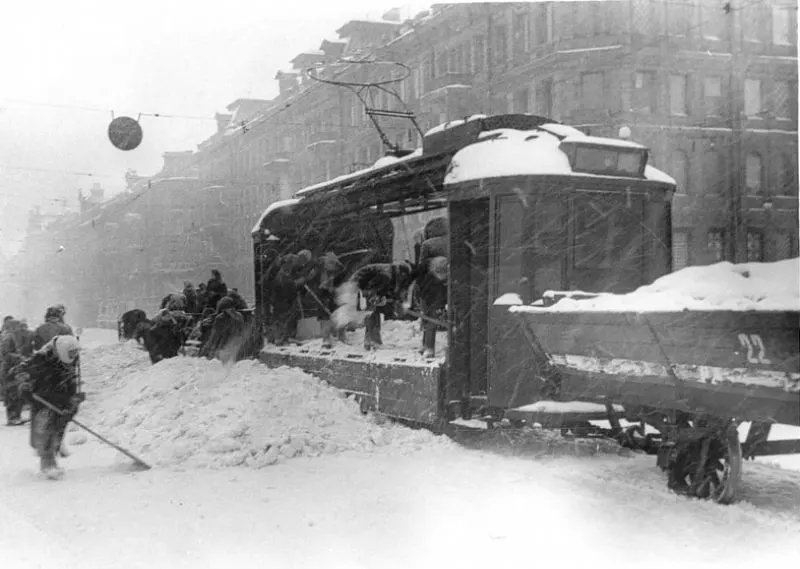



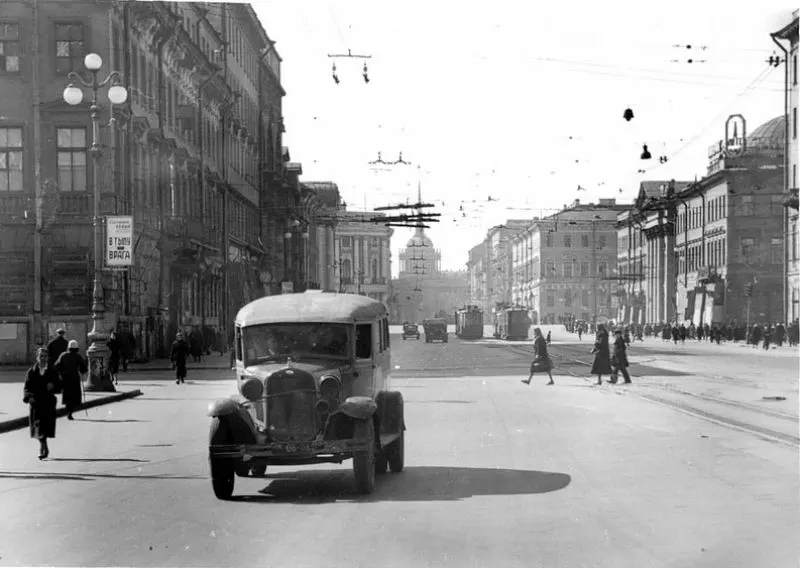

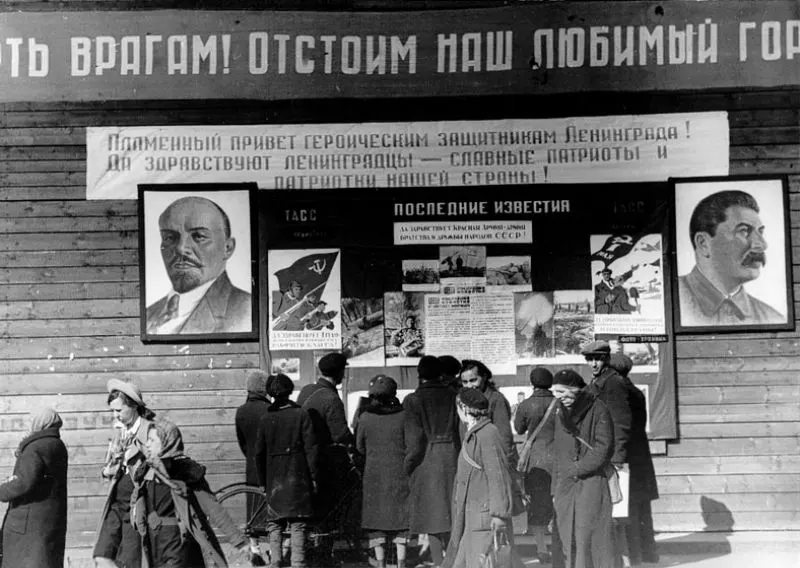



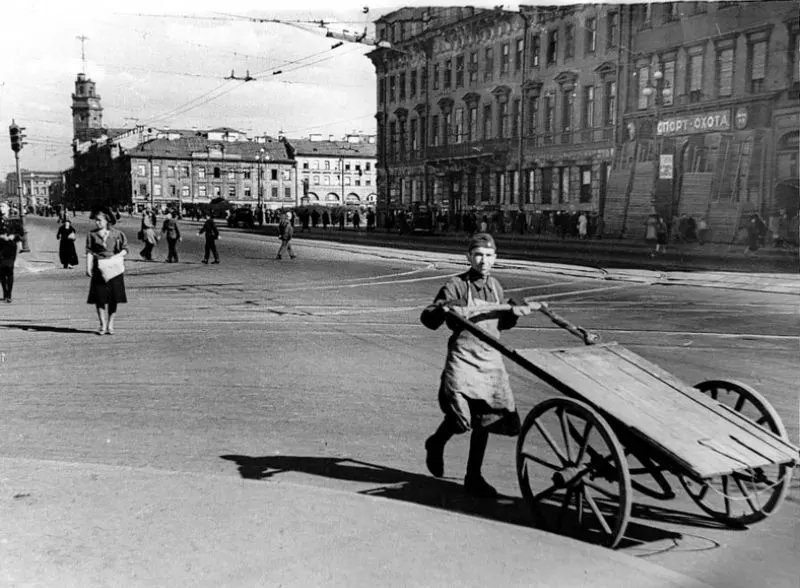
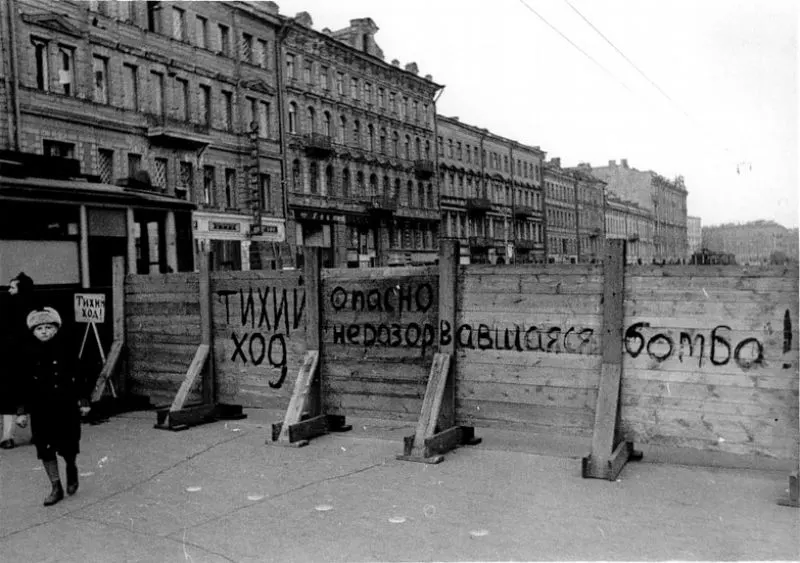



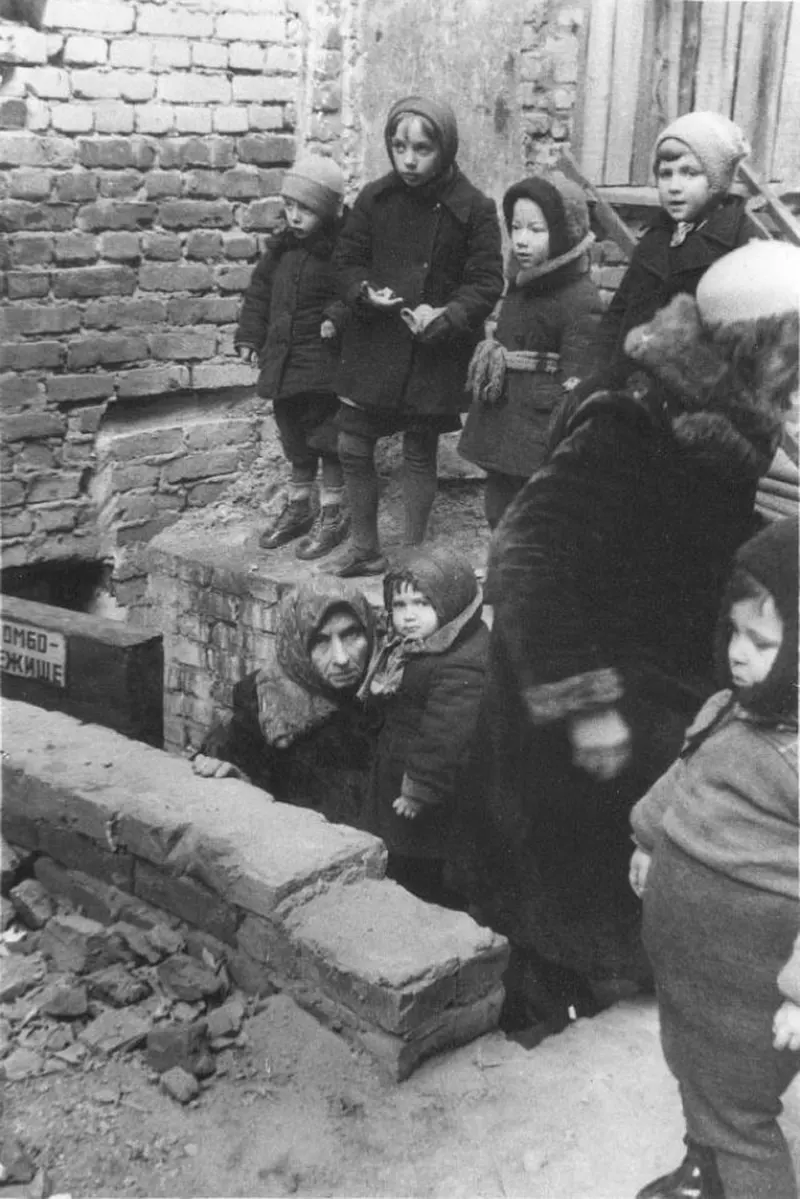
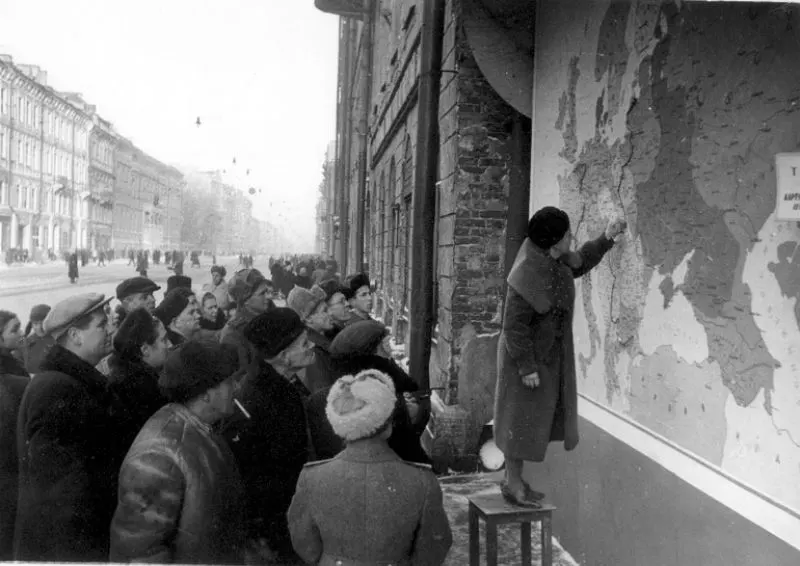
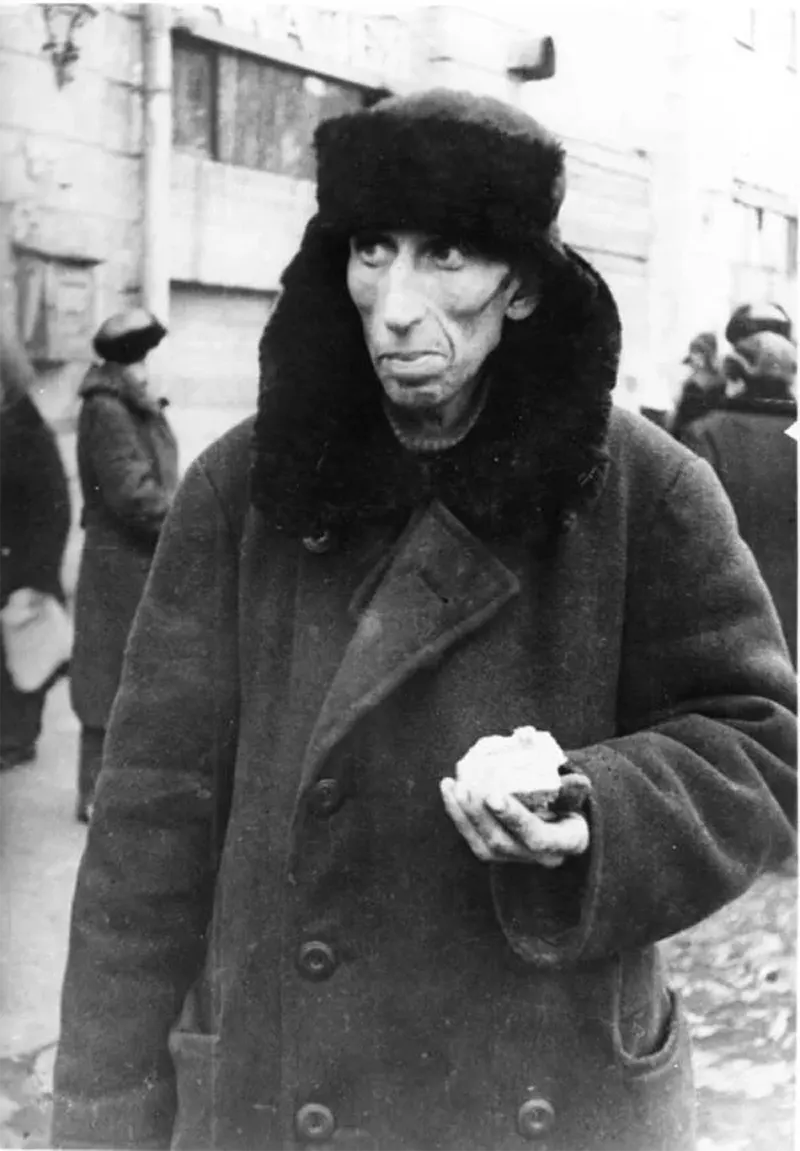


Every year, on 27 January, as part of the celebrations of the lifting of the siege, a military parade of the troops of the Western Military District and the Saint Petersburg Garrison on Palace Square takes place.
Close to 3,000 soldiers and cadets take part in the parade, which includes historical reenactors in Red Army uniforms, wartime tanks such as the T-34, and color guards carrying wartime flags such as the Banner of Victory and the standards of the different military fronts.
(Photo credit: TASS / Wikimedia Commons / Russian Public Archives).